Introduction
In the fuel cell lab, we study, design, manufacture, test, characterize and optimize advanced Proton Exchange Membrane (PEM) fuel cells. We use characterization data to optimize the design of PEM fuel cells for use in electric vehicles by studying the effects of varying design parameters on the total and net power output of the fuel cells. The fuel cell lab uses skills from mechanical, experimental, and electrical design, chemistry, data analysis, and fabrication. For a detailed view of what we do in the lab, check out the Past Projects and Publications tab and see our current research and projects below.
Current Research and Projects
Past Research and Projects
What is PEM Fuel Cell?

A PEM fuel cell is an electrochemical energy conversion device. It produces electricity and water from external supplies of fuel (on the anode side) and oxidant (on the cathode side). Fuel cells can operate virtually continuously as long as the necessary flows are maintained. A typical cell running at 0.7 V has an efficiency of about 50%, meaning that 50% of the energy content of the hydrogen is converted into electrical energy; the remaining 50% will be converted into heat. Fuel cells are widely accepted as the power sources of the future due to its high power density, high efficiency and zero emissions. Applications include the power sources for portable electronics, transportations replacing internal combustion engines and local stand-alone power plants such as combined heat and power system.
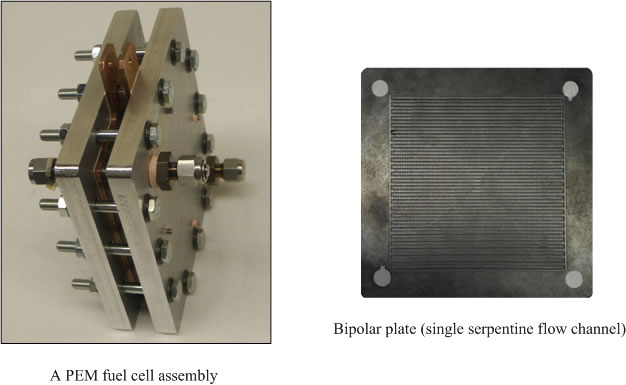
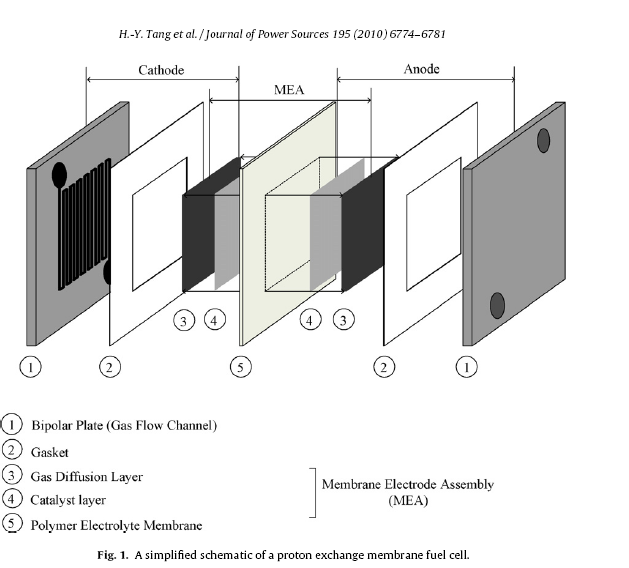
A PEM cell consists of a membrane electrolyte assembly (MEA) sandwiched between two bipolar plates. The gas diffusion layer (electrode backings), catalyst layer and polymer electrolyte membrane are referred to as MEA where current is produced. Fuel and oxidant are supplied to both sides of MEA through the flow channels on the bipolar plates producing electron in the anode catalyst layer and water in the cathode catalyst layer. The polymer electrolyte membrane conducts the proton produced by hydrogen oxidation to the cathode. An additional plate is inserted to provide coolant path between each cell or the cooling path is integrated in the bipolar plate. Cells are arranged in series to form a stack in order to produce sufficient power for practical application.
Facilities
The GTL Fuel Cell Lab is located in 1228 Bainer Hall.
A neutron radiography and tomography setup is available for imaging of battery and fuel cell systems. Extreme environmental testing can be conducted for in-situ and ex-situ studies.
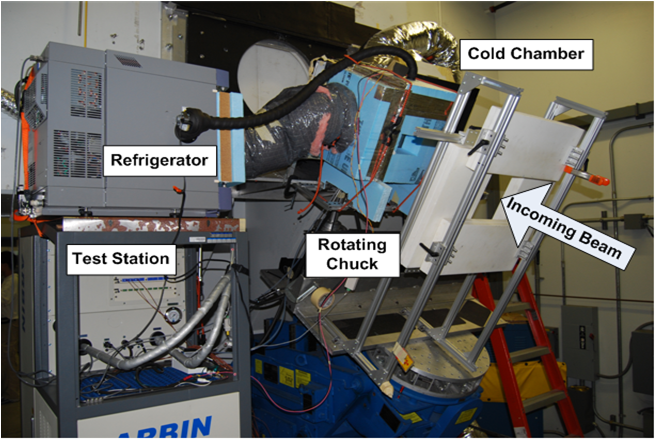
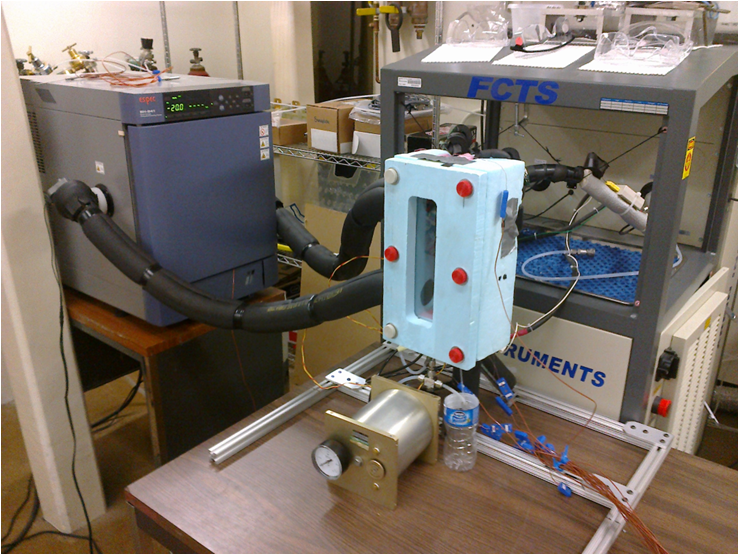
A second fuel cell testing station with full gas, humidity, temperature, voltage and current control is available for up to 250 Watt single cell testing.
We have custom built tools for fabricating Membrane Electrode Assemblies (MEA) for PEM fuel cells.
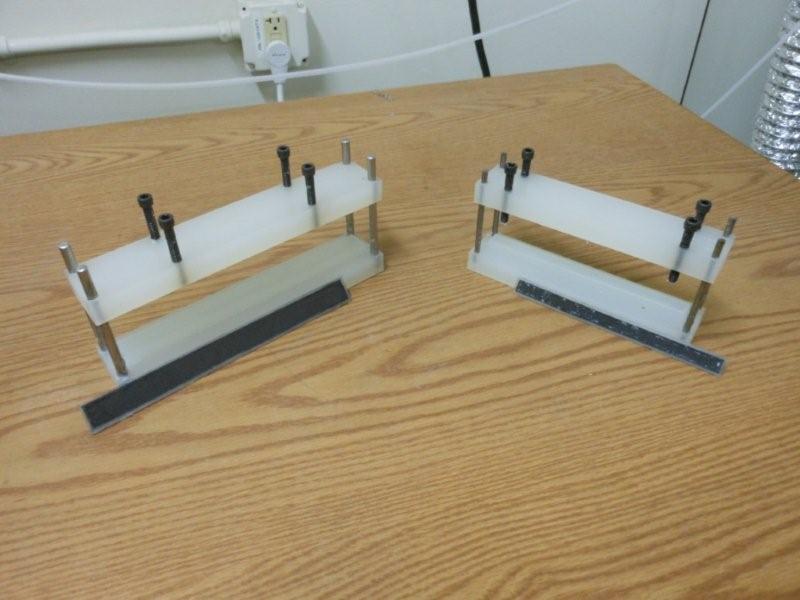
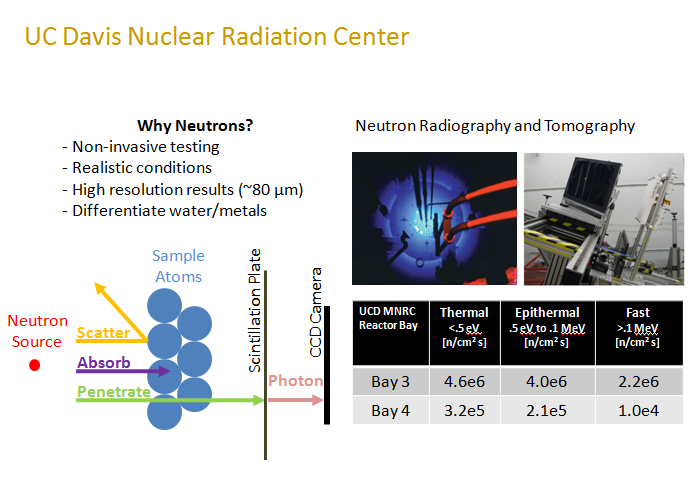
We work with the UC Davis NMR Center to image the inside of fuel cells while under operation. This provides a detailed insights into water build-up in the fuel cell.